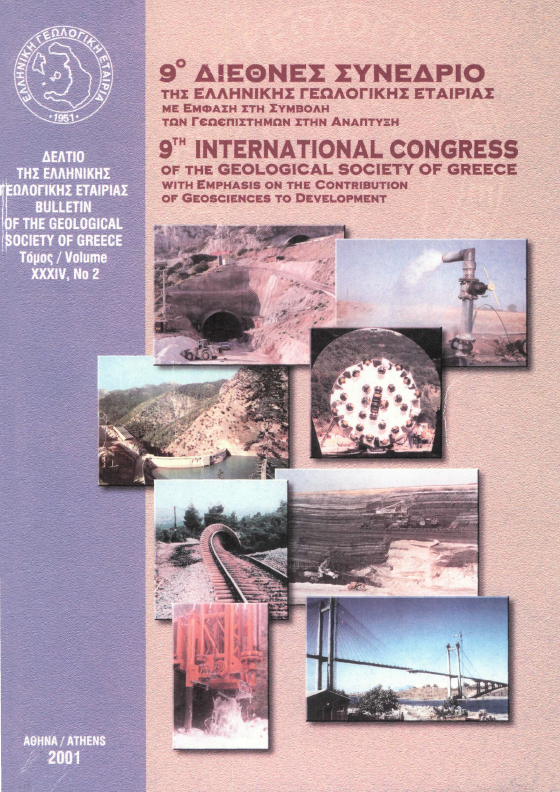Neotectonic movements, sedimentation and water-level fluctuation of the Lake Vegoritis in Upper Quaternary

Abstract
Lake Vegoritis is a 20km long lake located within the NE-SW oriented, Late Pliocene - Quaternary Vegoritis neotectonic depression. More than 200km of high resolution Boomer profiles provided valuable data on the recent evolution of the area. Two main seismic units separated from each other by an erosional surface (Reflector "W") were recognized in the upper 50-60m below the lakebed. The upper seismic unit is an onlapping basin fill characterized by parallel, sub-horizontal internal reflectors. The thickness of the unit reaches 15-20m in the deeper part of the lake. The lower seismic unit is a parallel-stratified unit with continuous internal reflections, slightly folded or inclined. We interpret Reflector "W" as the peri-lake land-surface during the last lake-level low stand, i.e. during the last glacial maximum. The lake has amassed on average 15-20m of sediments since the end of Wurm Glacial Period with a mean sedimentation rate of about lm/kyr. 210Pb geochronology applied on a sediment core recovered in front of the main water stream outflow yielded maximum sedimentation rate of 0.4cm/y for the time before 1956 and 0.6cm/y since 1956. The later is attributed to the dramatic man-induced lowering of the lake level by more than 30m between 1956-1990. Both the lakebed and the sediments below dip gently westwards, towards the SW-NE trending Vegoritis marginal fault. Slope failure phenomena occur in various stratigraphie levels along the fault-controlled western steep slope. The newly discovered E-W trending Ag Panteleimon fault divides Vegoritis fault into a northern active segment and a southern less effective one. On the seismic profiles the southern fault block subsides forming a 2m high morphological step on the lakebed, while the lake sediments are slightly folded. Further to the west Ag. Panteleimon fault separates Jurassic marbles to the north from Pleistocene conglomerates to the south and divides the NE-SW trending Petron-lake fault into two segments. We interpret Ag. Panteleimon fault as a dextral strike slip fault with minor normal component. In conclusion, strike slip movements have significantly influenced the formation and evolution of the Late Pliocene-Quaternary Vegoritis asymmetric graben and possibly of other basins in NW Greece. Despite the "suspicious" very low seismicity of the area, both normal and strike slip faults remain presently active with high seismic potential
Article Details
- How to Cite
-
ΣΑΚΕΛΛΑΡΙΟΥ Δ., ΡΟΥΣΑΚΗΣ Γ., ΚΡΑΝΗΣ Χ., ΚΑΜΠΕΡΗ Ε., ΓΕΩΡΓΙΟΥ Π., & ΣΚΟΥΛΙΚΙΔΗΣ Ν. (2001). Neotectonic movements, sedimentation and water-level fluctuation of the Lake Vegoritis in Upper Quaternary. Bulletin of the Geological Society of Greece, 34(1), 207–216. https://doi.org/10.12681/bgsg.17015
- Section
- Tectonics

This work is licensed under a Creative Commons Attribution-NonCommercial 4.0 International License.
Authors who publish with this journal agree to the following terms:
Authors retain copyright and grant the journal right of first publication with the work simultaneously licensed under a Creative Commons Attribution Non-Commercial License that allows others to share the work with an acknowledgement of the work's authorship and initial publication in this journal.
Authors are able to enter into separate, additional contractual arrangements for the non-exclusive distribution of the journal's published version of the work (e.g. post it to an institutional repository or publish it in a book), with an acknowledgement of its initial publication in this journal. Authors are permitted and encouraged to post their work online (preferably in institutional repositories or on their website) prior to and during the submission process, as it can lead to productive exchanges, as well as earlier and greater citation of published work.




